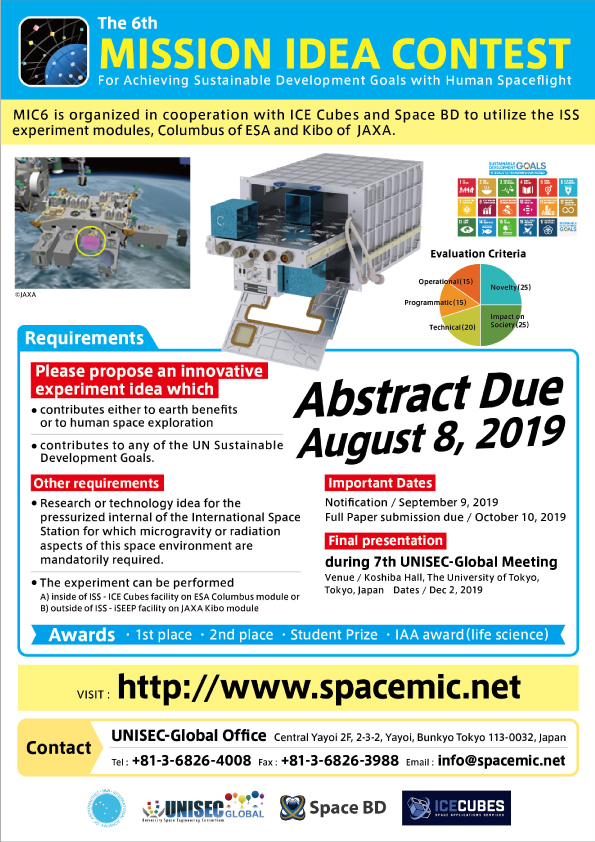 • June 7, 2019
• June 7, 2019
MIC6 flier is available. Please feel free to download it.
 MIC6 flier MIC6 flier
• February 11, 2019
First announcement of the 6th Mission Idea Contest
|
|
The Mission Idea Contest (MIC) was established in 2010 to provide aerospace engineers, college students, consultants, and anybody interested in space with opportunities to present their creative ideas and gain attention internationally. The primary goal of MICs is to open a door to a new facet of space exploration and exploitation.
Development of micro/nano-satellites started as an educational and research program primarily at university laboratories. As the micro/nano-satellite technology matures, it has spread rapidly across the academics and industry for practical application.
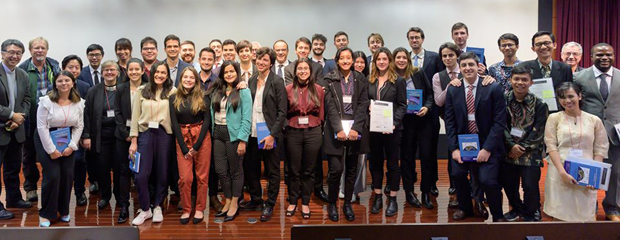
Category A: ICECubes
1st Place: MUSA: An ISS Experiment for research of a dual culture for Panama Disease, Costa Rica Institute of Technology(TEC)
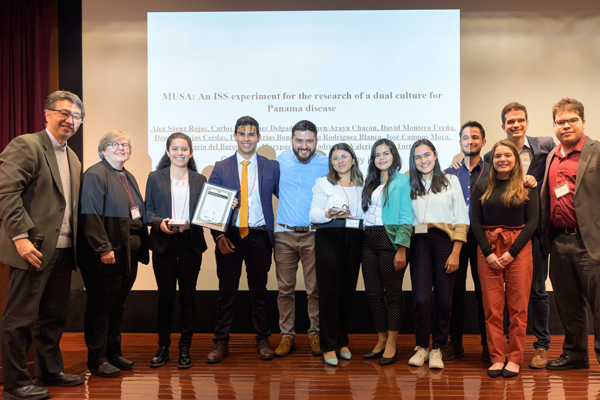
Student Prize: MARGE Melanoma Apoptosis Reduced Gravity Experiment, Sapienza University of Rome
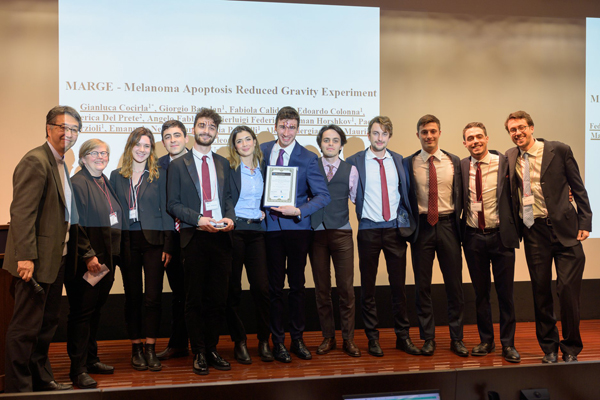
Category B: iSEEP
1st Place: Spectrum Monitoring from Space with i-SEEP (SMoSiS), University of the Philippines Diliman
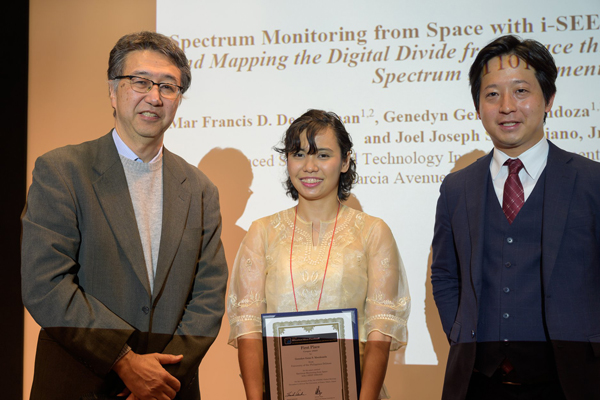
Student Prize: Mountain VIEWS (Mountain Volcanoes Identification and Early Warning System, Telkom University
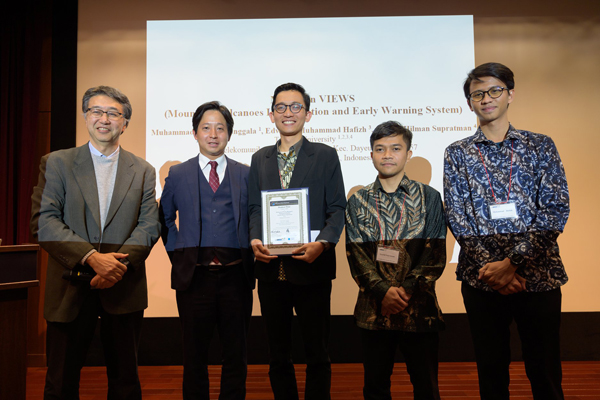
IAA Award: MUSA: An ISS Experiment for research of a dual culture for Panama Disease, Costa Rica Institute of Technology
Finalist
| Title | Name | Affiliation | Country | Movie |
|---|
| Category: iSEEP |
|---|
On-Orbit Total Ionizing Doze Testing of Commercial Off-The-Shelf (COTS) parts for Small Satellites
 Presentation (2.28 MB) Presentation (2.28 MB) | Senior Shimhanda | Kyushu Institute of Technology | Japan |  |
gamma ray astronomy by cubesat swarms
 Presentation (2.70 MB) Presentation (2.70 MB) | Plamen Dankov | Sofia University St. Kliment Ohridski | Bulgaria |  |
Spectrum Monitoring from Space with i-SEEP (SMoSiS)
 Presentation (2.76 MB) Presentation (2.76 MB) | Joel Joseph S. Marciano, Jr | DOST-ASTI and University of the Philippines Diliman | The Philippines |  |
Mountain VIEWS (Mountain Volcanoes Identification and Early Warning System)
 Presentation (2.37 MB) Presentation (2.37 MB) | Muhammad Manggala | Telcom University | Indonesia |  |
| Category: ICE Cubes |
|---|
Quantification of Metal Extraction from a Substrate by Biomining
 Presentation (1.97 MB) Presentation (1.97 MB) |
Lopez Campos Graciela |
Universidad de Costa Rica |
Costa Rica |
 |
MUSA: An ISS Experiment for research of a dual culture for Panama Disease
 Presentation (3.21 MB) Presentation (3.21 MB) | Jose Ricardo Campos Mora | Costs Rica Institute of Technology (TEC) | Costa Rica |  |
MARGE Melanoma Apoptosis Reduced Gravity Experiment
 Presentation (2.08 MB) Presentation (2.08 MB) | Gianluca Cocirla | Sapienza University of Rome | Italy |  |
| Semi-finalist (Categoly: ICE Cubes) |
|---|
HVBM: Heart Valve prosthesis Behavior in Microgravity environment
 Presentation (3.37 MB) Presentation (3.37 MB) | Anisia Lauditi | Politecnico di Milano | Italy |  |
Technology Demonstrate of Bone-Loss-Reducing Bacteria Culture for Deep Space
 Presentation (5.40 MB) Presentation (5.40 MB) | Saran Seehanam | Space Youth Association of Thailand (SYAT) and FREAK laboratory | Thailand |  |
Bacterilogical Mutation by Cosmic Radiation
 Presentation (1.52 MB) Presentation (1.52 MB) | Santos Gustavo Javier | UTN-FRC | Argentina |  |
Scope
The MIC6 offers aerospace engineers, scientists, college students, consultants, and anybody interested in space with opportunities to present their creative ideas on payload for ISS platform and gain attention internationally. The primary goal of MIC is to open a door to a new facet of space exploration and research & technologies.
Recently opportunities opened up to all to regularly and rapidly fly payloads (from 1U upwards) to the International Space Station (ISS), the permanently inhabited location other than Earth and our stepping stone to exploration of the moon, Mars and beyond. This way access for the performance of research, the development and test of technology and the manufacturing of innovative products in low Earth orbit is becoming a reality.
On-board of the International Space Station, research can be done, and technologies can be testing making use of the unique features of microgravity and radiation. Applied research making use of the microgravity value features allows for significant relevance for terrestrial benefits and allows the research to also contribute to the UN Sustainable Development Goals.
MIC6 is organized in cooperation with ICE Cubes and Space BD to utilize the ISS experiment modules, Columbus of ESA and Kibo of JAXA.
Requirements
Please propose an innovative experiment idea which:
- either contributes to earth benefits or contributes to human space exploration
- contributes to any of the UN Sustainable Development Goals.
Other requirements:
- Research or technology idea for the pressurized internal of the international space station for which microgravity or radiation aspects of this space environment are mandatorily required.
- The experiment can be performed
A) inside of ISS - ICE Cubes facility on ESA Columbus module or
B) outside of ISS - iSEEP facility on JAXA Kibo module
See below for more details.
A) in the ICE Cubes facility installed in ESA’s Columbus module: www.icecubesservice.com Payload of dimension of between 1U (10*10*10cm) and 3U*4U (30*40*10cm).  More information More information
B) in the iSEEP facility in JAXA’s Kibo module:
http://iss.jaxa.jp/en/kiboexp/ef/i-seep/ Payload of dimension of between 1U (10*10*10cm) and 3U (30*30*10cm).  More information, More information,  Specification Specification
Schedule
- Call for paper: February 8, 2019
- Abstract submission due: August 8, 2019
- Notification: September 9, 2019
- Full Paper submission due: October 10, 2019
- Final presentation: during 7th UNISEC-Global Meeting
Venue: The Koshiba Hall, the University of Tokyo, Tokyo, Japan
Dates: Dec 2, 2019
Evaluation Criteria
- Originality (50 points)
- Novel concept not yet realized or proposed, or a new implementation of an existing capability or service (25)
- Impact on society / Sustainable Development Goals / human spaceflight exploration (25)
- Feasibility (50 points)
- Technical (20)
- Programmatic (cost estimate, development schedule, infrastructure requirements) (15)
- Operational (protocol, communication and interaction during experiment) (15)
Reasons for participation
-
Finalists will be given an opportunity to make a final presentation in front of international reviewers during 7th UNISEC-Global Meeting in Tokyo in November 30 - December 3, 2019.
- Awards:
- 1st place:
- Certificate
- (A) ICE Cubes:
- 25% discount on a 1U cube of 1 kg for 4 months operations for a launch within 2 years from award and
- A visit to the ICE Cubes control centre / clean room and the European Astronaut Centre or Monetary award (500 Euro)
- (B) iSEEP: 25% discount on a 1U-3U size payload for 6 months operations for a launch within 2 years from the award and Monetary award (50,000 Japanese yen)
- 2nd place:
- Certificate
- (A)ICE Cubes:
- 15% discount on a 1U cube of 1 kg for 4 months operations for a launch within 2 years from award and
- A visit to the ICE Cubes control centre / clean room and the European Astronaut Centre or Monetary Award (300 Euro)
- (B) iSEEP: 15% discount on a 1U-3U size payload for 6 months operations for a launch within 2 years from the award and Monetary award (30,000 Japanese yen)
- Student Prize:
- Certificate
- (A) ICE Cubes:
- 10% discount on a 1U cube of 1 kg for 4 months operations for a launch within 2 years from award and
- Monetary Award (250 Euro)
- (B) iSEEP: 10% discount on a 1U-3U size payload for 6 months operations for a launch within 2 years from the award and Monetary award (25,000 Japanese yen)
 IAA award IAA award
- Selected papers will be published
- High visibility for your ideas and the potential for future collaboration and support
Abstract Template:  Word Template / Word Template /  PDF Template PDF Template
Full Paper Template:  Word Template Word Template
|









